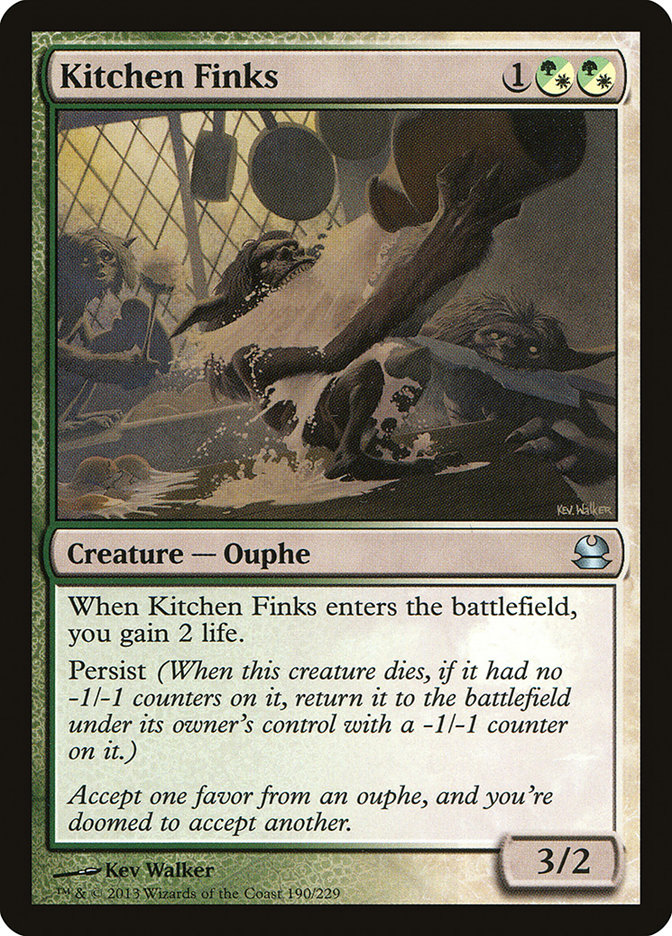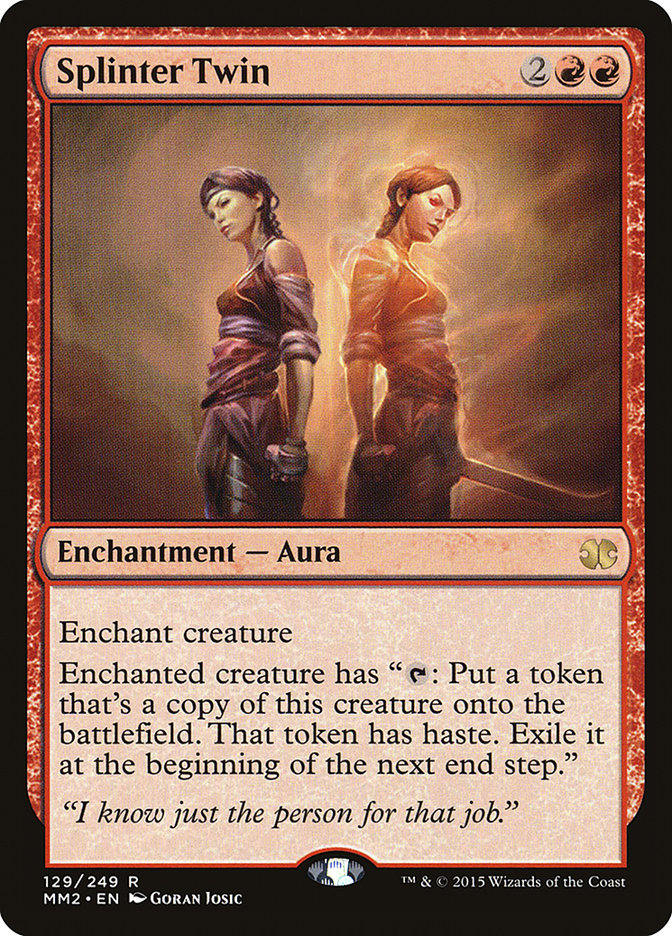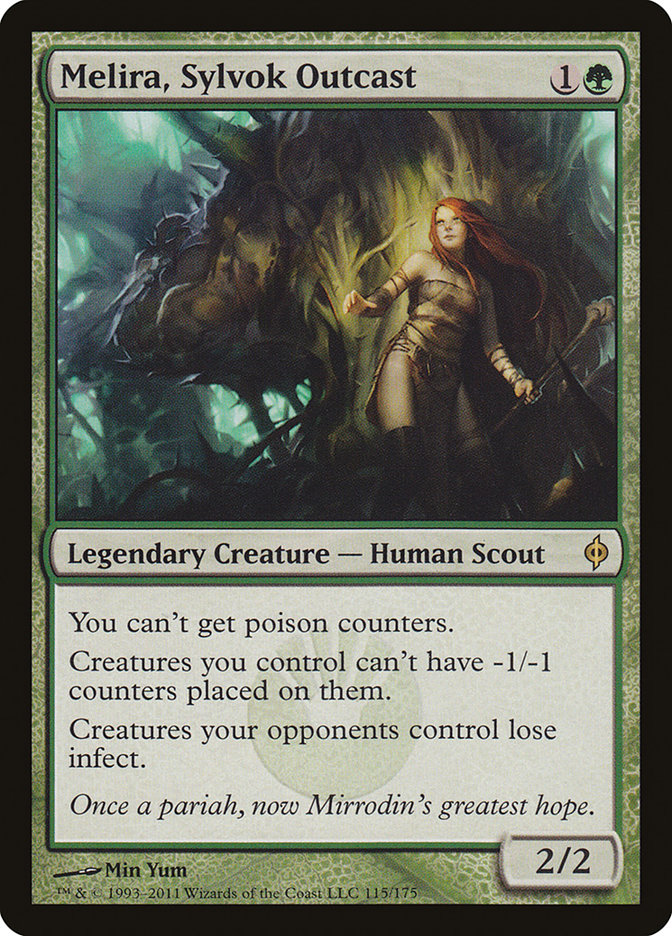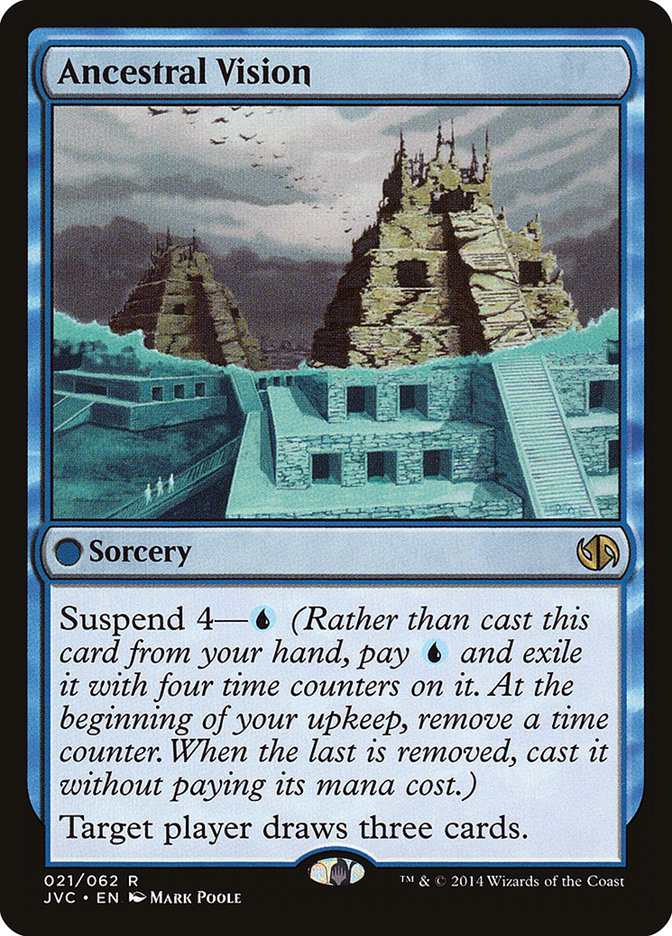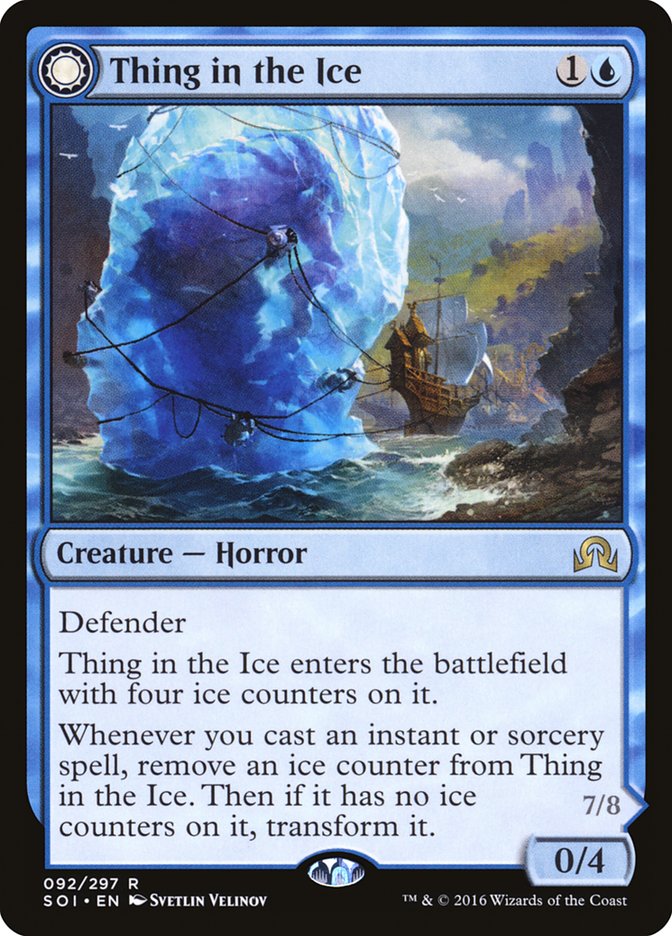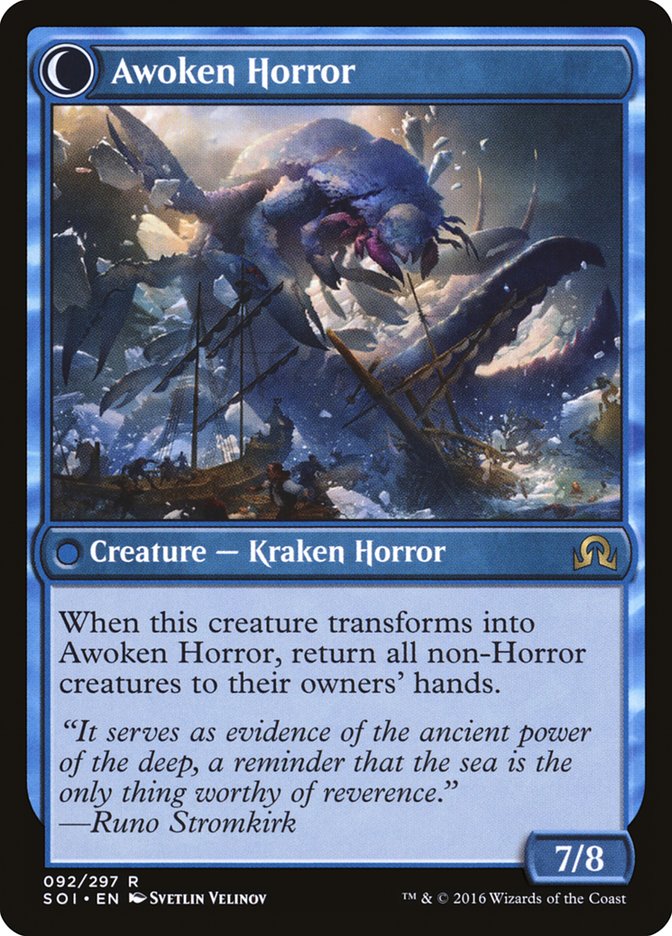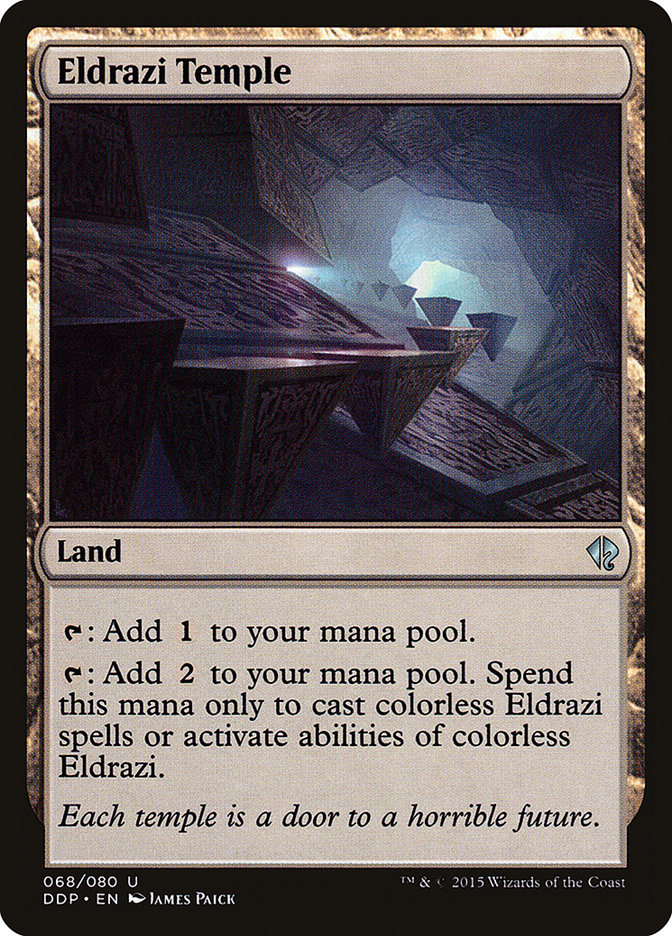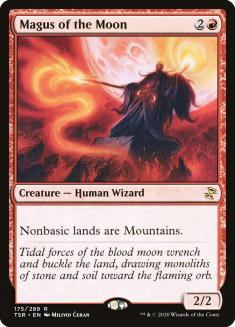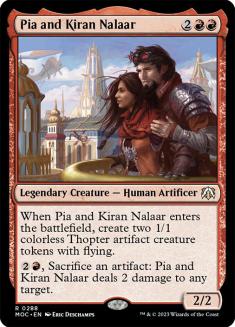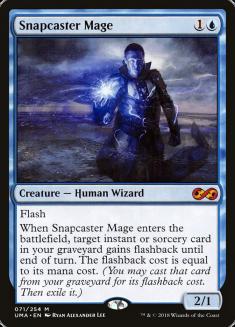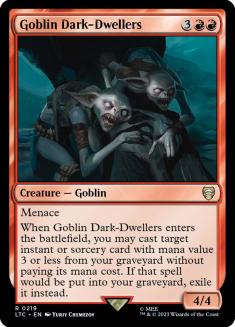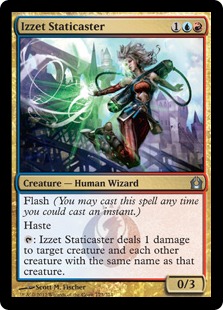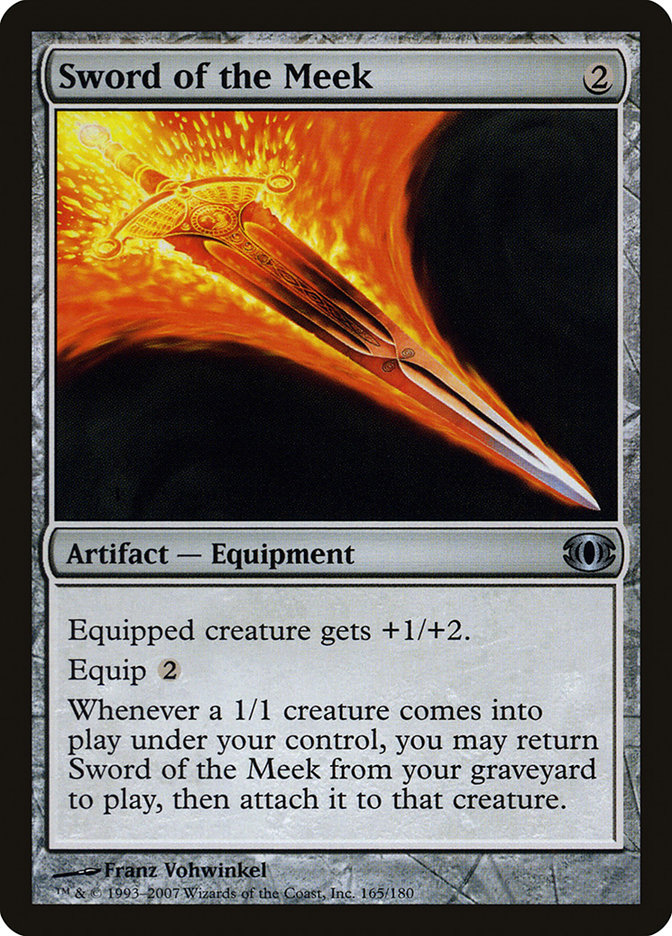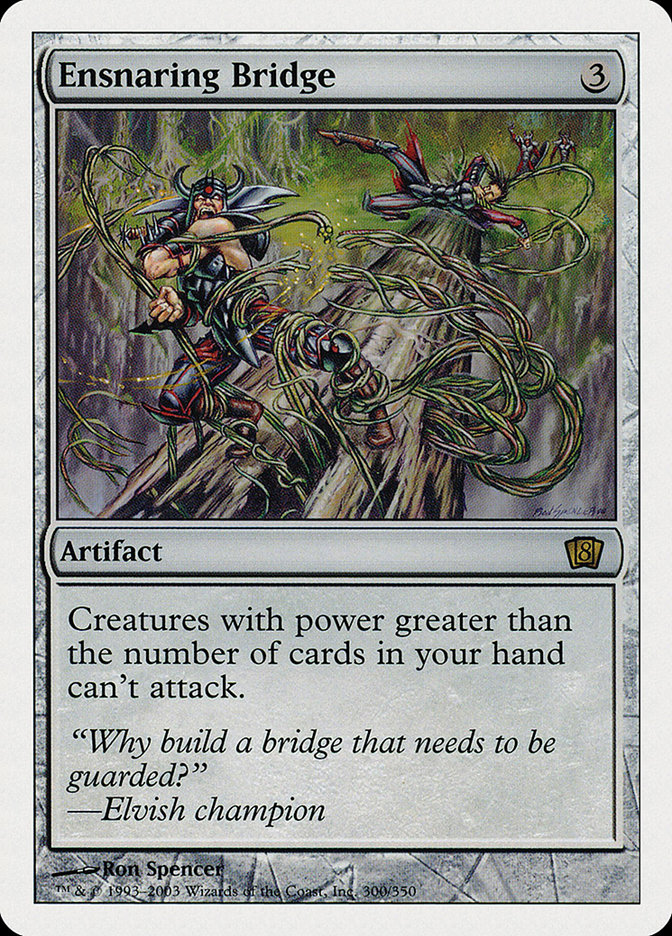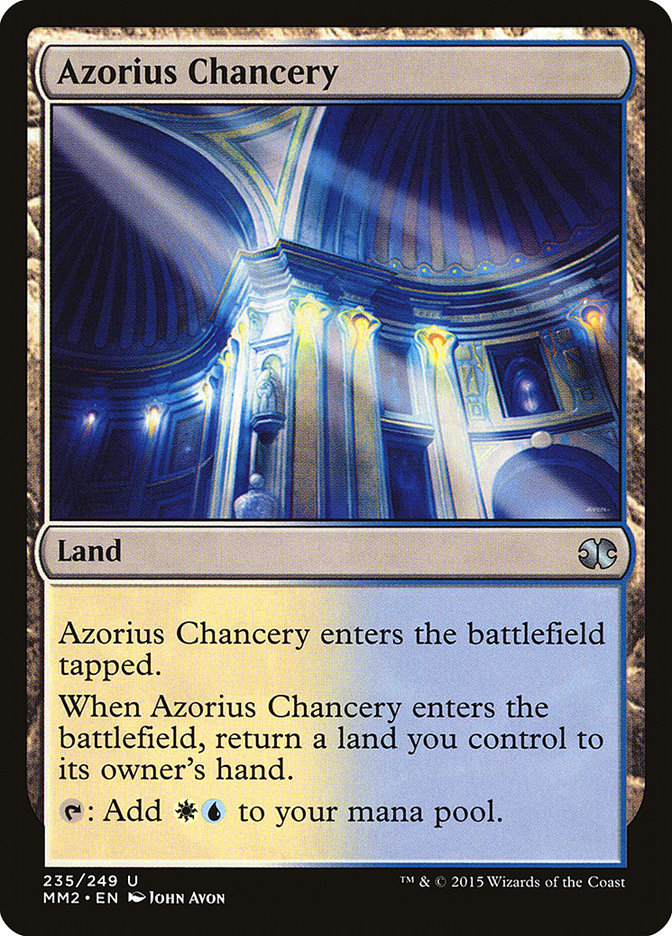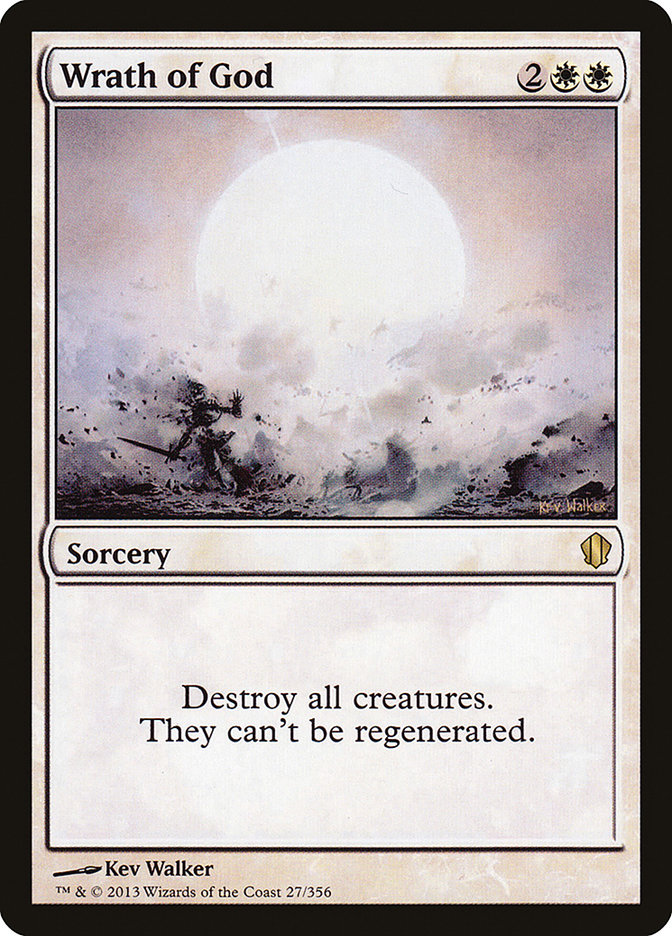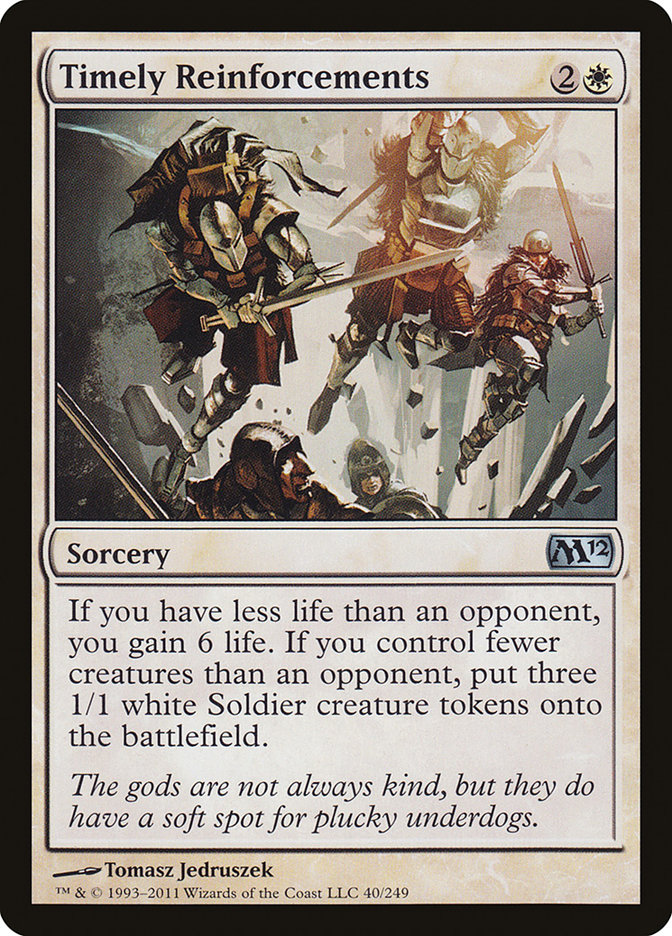StarCityGames.com is running #GPCharlotte and it’s gonna be insane.
Modern is in that weird spot post-bannings where everyone is trying to get their bearings. On top of it all, there are some sleepers in some recent sets that are starting to take over. These new cards and strategies are starting to see play because they’re actually powerful and are finally finding good homes. After all, the barrier to enter Modern and actually be playable is quite high.
If you want to do well at #GPCharlotte, you need to do exactly one thing: respect the new players.
Creatures (30)
- 4 Birds of Paradise
- 3 Eternal Witness
- 2 Wall of Roots
- 1 Orzhov Pontiff
- 4 Kitchen Finks
- 1 Murderous Redcap
- 3 Noble Hierarch
- 3 Viscera Seer
- 1 Spellskite
- 2 Melira, Sylvok Outcast
- 1 Scavenging Ooze
- 1 Fiend Hunter
- 2 Voice of Resurgence
- 2 Anafenza, Kin-Tree Spirit
Lands (23)
Spells (8)

Collected Company obviously isn’t very new, but it’s the de facto best deck, at least for right now. Both of the recent big Modern tournaments, #SCGMKE and #SCGINVI, were dominated by very similar-looking Abzan Company decks.
How did that happen?
Well, first there was Splinter Twin and then there was Eldrazi. Abzan Company rose to power during Eldrazi Winter because it was one of the few decks that could actually hang with it. You could rationalize that those players are simply holding onto the deck they used to play and should probably adapt, considering it’s a brand new format and all, but I actually disagree.
Here’s why: Abzan Company is the new version of Splinter Twin.
Both decks are remarkably similar. Each has a potential combo kill, but neither deck is one-dimensional. In fact, working towards combo-killing people each game will likely be detrimental to your success. Instead, you need to be flexible and adapt your gameplan to whatever the battlefield dictates you do. Sometimes you’re controlling, sometimes you’re the aggressor, and sometimes your only out is to try to hit some combo pieces off Collected Company. Knowing how and when to shift your role will only come with practice.
Also, most players will be scared of your combo potential and over-sideboard against it. At that point, you can safely shave some combo pieces and function as a mediocre, but still potent Zoo deck.
Melira is the real deal because it’s not vulnerable to any particular type of hate card. Grafdigger’s Cage is annoying, but it doesn’t stop Eternal Witness, Voice of Resurgence, or Gavony Township. Rest in Peace is similar, except now the Abzan Company player can actually Chord of Calling for a specific answer if they care. Anger of the Gods? Sure, I’ll just reload with Collected Company.
All right, that one probably does it, at least in Game 1.
Josh Cho played Jund at a recent SCG Classic and lamented how difficult the Ancestral Vision matchups were. He cited Painful Truths as the only card that gave him a chance, but it was only a fun-of in his 75.
Ancestral Vision is immune to most interaction, such as discard and soft permission, which makes life difficult for any B/X deck. Craig Krempels made the finals of #SCGINVI with three copies of Painful Truths in his Abzan 75, and that’s likely the direction you have to take.
Creatures (12)
Planeswalkers (3)
Lands (24)
Spells (21)

Wasteland Strangler is great if the Ancestral Vision deck ever presents a target for the Strangler; otherwise you have to pick off one of your own creatures. The way the Ancestral Vision decks are built, that’s a very unlikely scenario unless they’ve cast a Snapcaster Mage. By that time, their Ancestral may have already come off suspend.
Ancestral Vision is not ubiquitous, at least not yet, but it’s showing up very frequently. I’ve barely scratched the surface with the card, as I’ve been distracted with other shiny new toys. I once made a promise that, if WotC ever unbanned Ancestral Vision, I’d show them it was a mistake, and I intend to make good on that.
I just need time!
Creatures (9)
Lands (23)
Spells (29)

Blue Moon is one of the best homes for Ancestral Vision and is one of the decks I’m going to try once I finally finish brewing entirely brand-new decks. That deck lacked a powerful win condition and a way to take complete control of a game, and now it has both.
Thing in the Ice is a suitable Tarmogoyf replacement if you’re not interested in splashing a color. It’s mostly good where Tarmogoyf is great, but there are some matchups where Thing in the Ice is better than having a sweeper, and those matchups are traditionally tough for Blue Moon.
We all know who’s been playing Grixis Control the most recently.
Creatures (9)
Lands (24)
Spells (27)

People are still sleeping on this one, which is evident by the rate at which Abzan Company performs. Jund, Abzan, Grixis, and even Mardu can benefit from leveraging the closing power of Kalitas.
Previously, Pia and Kiran Nalaar was the go-to four-drop of choice, but those were different times. Affinity, Infect, Jund, and Grixis ran rampant. The ability to block Inkmoth Nexus and Etched Champion while also providing multiple threats for one card was everything a Grixis deck could ever want.
From Majors’s experience, we can conclude that Kalitas, Traitor of Ghet is a real card and potentially the best way to shift Grixis’s focus. It is maindeckable hate for Abzan Company and Burn/Zoo, plus it’s very powerful against any creature deck. Kalitas is exactly the type of lynchpin I was looking for.
Majors’s analysis of how Grixis needs a fast, powerful threat is certainly true as well, and that’s the major hole in building your deck around Kalitas. Some slots are going to have to shift around, and something needs to be done in order to solve that issue.
Thing in the Ice could potentially be that two-drop, but it felt cumbersome at times. I never experimented with Gitaxian Probe, and that might speed things up enough. Of course, that also requires a drastic overhaul of the deck, but I’m willing to try. With Ancestral Vision; Kalitas, Traitor of Ghet; and what is essentially a brand-new format, the deck needs an overhaul anyway.
Ancestral Vision seems to slot into Grixis Control perfectly, but I’d prefer to have more countermagic alongside it. Without a solid counterwall, Ancestral Vision isn’t the “clock” against combo that it should be. Sometimes Ancestral Vision finally comes off and you draw a dead Inquisition of Kozilek, a removal spell with no targets, and an extra land. If that issue could be solved, perhaps we don’t need an early threat because Ancestral Vision is all you need.
I covered this one last week. There are too many options for Eldrazi decks, but I do believe a contender is there.
Similarly to Melira, Scapeshift didn’t start performing well until Splinter Twin was gone. Now it’s a huge portion of the metagame. Some of those decks eschew Scapeshift entirely because they’d rather do crazy things with Primeval Titan.
Creatures (11)
Lands (25)
Spells (24)
Sideboard

Utopia Sprawl is an interesting addition, as it’s one of the few cards that can reliably help you cast Through the Breach on turn 3. It’s also another accelerant, so turn 4 Primeval Titan is very consistent, especially with Summoner’s Pacts.
Have you ever wondered what would make Temur playable in Modern (sorry, Todd Anderson)? As it turns out, a little bit of versatility goes a long way.
While none of these cards is truly exceptional on their own, each of them is potent in specific situations. It’s time to build a toolbox.
Creatures (12)
Lands (22)
Spells (26)

This deck doesn’t take full advantage of the Traverse the Ulvenwald toolbox, but sometimes it’s better to keep it simple. The sideboard is probably where we want to go wild with potential tutor targets.
Many of the decks I’m featuring today have two or more new pieces, which is worth noting. Perhaps something like Traverse the Ulvenwald wouldn’t have made Temur viable on its own, but alongside Ancestral Vision, you have enough new toys to make something work. Each individual card on this list is a reasonable option, but once you start combining them, that’s typically when good things start happening.
This card is going to usher in a new era of Modern combo/control decks. One card that requires very little outside of playing a copy of Emrakul, the Aeons Torn alongside red and white mana effectively kills in three turns. Shaun McLaren shared his experiences with Nahiri earlier in the week and I recommend checking that out if you haven’t already.
The downside of having to play with Emrakul, the Aeons Torn is negated by how well Nahiri and Emrakul synergize together. Just don’t build your deck to also do anything tricky with your graveyard.
While pure control was never truly viable, combo/control has been excellent. This isn’t quite Splinter Twin, as the turn 4 kill made matchups like G/R Tron and G/W Hexproof easy, which is something no control deck can claim. However, it’s a one-card engine that ends the game quickly, is hard to remove, and even helps filter your draws or remove threats!
What’s not to love?
Various Jeskai Control builds featuring Nahiri, the Harbinger are out there now, possibly thanks to Adam Blaine Tellis making Day 2 with the archetype at #SCGMKE. Those decks are all rather similar, so I’d like to highlight something different.
Creatures (1)
Planeswalkers (4)
Lands (23)
Spells (32)

Maybe this is a better way to support Thopter Foundry / Sword of the Meek. Gifts Ungiven has been very slow, but Nahiri, the Harbinger is the opposite of that. It doesn’t give you nearly as many options, but I don’t think that’s what the deck needs either. If we were scared of hate for the artifacts coming in post-sideboard, Nahiri, the Harbinger is exactly the type of card you would want to bring in to sidestep their hate.
The obvious creature to search for with Nahiri, the Harbinger is Emrakul, the Aeons Torn, but that’s not the only creature that effectively ends the game.
Creatures (11)
Planeswalkers (2)
Lands (25)
Spells (22)

Some of the R/G Valakut decks play Through the Breach already, simply because that effect with Primeval Titan almost always kills in one shot. Nahiri, the Harbinger is more of the same. It adds resiliency to the Through the Breach aspect of your deck by being more functional copies of that effect, but it can also filter through the awkward draws.
Nahiri, the Harbinger with any sort of acceleration will often end the game. Six loyalty is just so much right off the bat, especially if it’s on turn 3.
I’ve made some small adjustments to my U/W Thopter deck:
Creatures (2)
Lands (23)
Spells (35)

There’s nothing earth-shattering here, but the changes are important.
I’m still unsure what kind of impact this one is going to have. Some decks are very soft to it Game 1, but there is no shortage of artifact removal coming in from sideboards these days.
One may wonder why adding a random Karoo is relevant, and that would be understandable.
Realistically, adding a Karoo to a deck with mana rocks isn’t a bad choice, as multiple Standard decks used to use the same sort of engine alongside Compulsive Research, a card I considered playing over some of my Thirst for Knowledges at times.
The biggest upside is for the corner case scenario where you have a land-light opener with Tolaria West. Once your Tolaria West is on the battlefield, you no longer have the opportunity to include it in a Gifts Ungiven pile.
Not being able to get a (functional) second copy of Academy Ruins isn’t necessarily a game-ender. For example, against Logan Mize in Round 13 of the #SCGINVI, I probably could have searched for Thopter Foundry, Sword of the Meek, Muddle the Mixture, Academy Ruins, and been completely fine.
Like I said, it’s small, but it came up multiple times in came up multiple times in #SCGINVI, and it’s a better solution than playing a second copy of Tolaria West.
The choice to play Supreme Verdict over Wrath of God was a conscious one, but I think I was wrong. While Supreme Verdict is typically just as easy to cast as Wrath of God, the upside to being uncounterable is almost moot given the metagame. I’m deathly afraid of Spell Pierce out of aggressive decks, but that sort of deck doesn’t really exist right now.
Instead, I’d rather shift my focus toward beating things that either exist now or will exist sometime in the near future, such as Thrun, the Last Troll and Ezuri, Renegade Leader.
Not including Timely Reinforcements was my biggest mistake when building the deck. Without it, I’m pigeon-holed into a position where I have to kill every creature on the battlefield unless I can assemble the Thopter Foundry / Sword of the Meek combo quickly.
Wrath of God does wonders for buying you time, but Timely Reinforcements is more efficient at doing so.
***
Despite Modern being in a stable, healthy spot with a mostly-defined metagame, it’s also a brewer’s paradise. There has been an influx of awesome cards into the format, plus the bannings of Splinter Twin and Eye of Ugin have unlocked a host of other strategies. Within three months, I think the format is going to look completely different, and that’s a great thing.
Realistically, the goal shouldn’t be to hate out all these strategies presented here. It’s just not possible given the depth of Modern. However, you should give them a spin if you have enough time, especially if something jumps out at you. If Modern has taught me anything, it’s that if each deck is equally good in a random metagame, the deck that doesn’t have a target on its head is the favorite.
I’ll see you at #GPCharlotte. Good luck to everyone at #SCGINDY this weekend.



